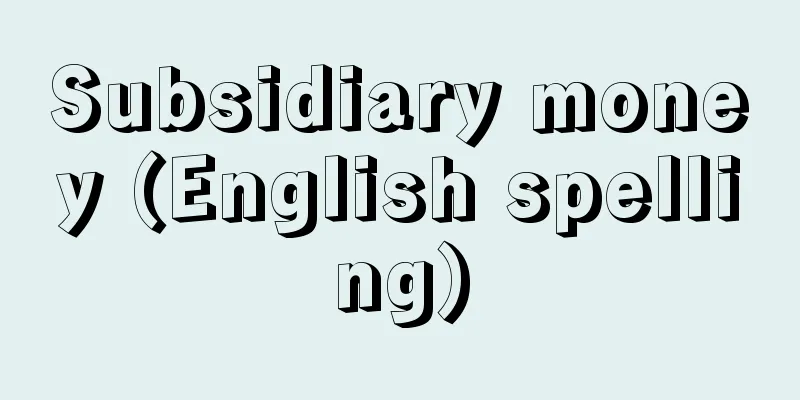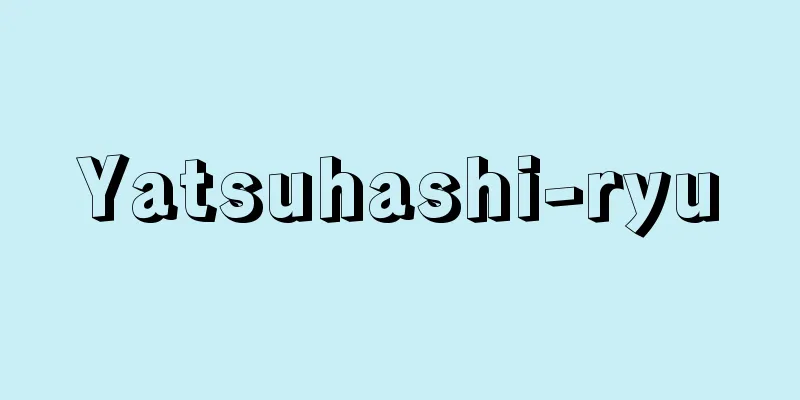Subsidiary money (English spelling)

|
Small denomination currency issued for use in small transactions. It is manufactured and issued by the government. Generally, it is a metal coin made of silver, copper, aluminum, nickel, etc., and is characterized by its face value exceeding the value of the metal it is made of. As shown by the fact that it is limited legal tender (in Japan, it is limited to 20 times its face value) with limited legal tender power, it was originally a partial substitute that supported the circulation of standard currency (gold coins) in small transactions. However, today, when standard currency is not minted, this supportive nature has been lost. In Japan, the issuance of subsidiary currency was originally stipulated in the Currency Law enacted in 1897 (Meiji 30) along with standard currency, but after the Temporary Currency Law was enacted in 1938 (Showa 13), it came to be based on that law. However, under the managed currency system, the contents of both the Currency Law and the Temporary Currency Law became noticeably hollow, so in 1987 (Showa 62), the new Law on Currency Units and Issuance of Currency was enacted to replace both laws. In this law, what was equivalent to subsidiary currency is simply called currency, and is a term that is contrasted with Bank of Japan notes. According to this law, there are six types of currency: 500 yen, 100 yen, 50 yen, 10 yen, 5 yen, and 1 yen, as well as commemorative coins of the above face values, 10,000 yen, 5,000 yen, and 1,000 yen, which are issued by cabinet decision as national commemorative projects. The power to manufacture and issue these coins belongs to the government, and coins are issued by delivering already manufactured coins to the Bank of Japan. [Tadashi Saito] [Reference items] | | |Source: Shogakukan Encyclopedia Nipponica About Encyclopedia Nipponica Information | Legend |
|
小口取引に用いるために発行される小額貨幣。製造・発行は政府が行う。一般に、銀、銅、アルミニウム、ニッケルなどを素材とする金属鋳貨であるが、その素材金属価値よりも額面が上回っていることを特徴とする。強制通用力に制限のある制限法貨(日本ではその額面の20倍まで)であることが示すように、本来は本位貨幣(金貨)の流通を小口取引の部面で補助する部分的代理物であった。しかし、本位貨幣が鋳造されない今日では、この補助の性格は失われている。 日本における補助貨幣の発行は、当初は1897年(明治30)制定の貨幣法に本位貨幣とともに規定されていたが、1938年(昭和13)に臨時通貨法が制定されてからは同法に基づくようになった。しかし、管理通貨制度のもと、貨幣法、臨時通貨法ともにその内容に空文化が目だってきたため、1987年(昭和62)に両法にかえて新たに「通貨の単位及び貨幣の発行等に関する法律」が制定された。同法では、これまでの補助貨幣に相当するものを単に貨幣と称し、日本銀行券に対置される用語としている。同法によると、貨幣の種類は、500円、100円、50円、10円、5円、1円の6種類、および国家的な記念事業として閣議の決定を経て発行される前記の額面価格と1万円、5000円、1000円の記念貨幣となっている。これらの貨幣の製造および発行の権能は政府に属し、貨幣の発行は製造済みの貨幣を日本銀行に交付することにより行われる。 [齊藤 正] [参照項目] | | |出典 小学館 日本大百科全書(ニッポニカ)日本大百科全書(ニッポニカ)について 情報 | 凡例 |
<<: Subsidies - Hojokin (English spelling)
>>: Guaranteed Delivery - Hoshowatashi
Recommend
Antidiarrhoics
...In the case of irritable bowel syndrome, in ad...
Sweet bamboo - Kanchiku
…The wood is hard and easy to split into small pi...
Loxosceles reclusa (English spelling)
...These two species are also known to bite human...
The home of Suwa
A story. 1 or 3 volumes. Also known as "Suwa ...
Wilkins, C.
…In 1783, the British judge W. Jones (1746-94) wa...
Kazamian, L.
...However, some foreign literature scholars pref...
Ijichi Danemon
…As for private kilns, the Naeshirogawa Kiln, est...
Aoudou Denzen - Aoudou Denzen
A Western-style painter from the late Edo period....
Elutriation - Elutriation
...A simple wet classification method that uses g...
Egyptian Mongoose
... The gestation period is 42 to 105 days, and t...
Charles William Le Gendre
1830‐99 American soldier and diplomat. Also known ...
Cactus
...A general term for succulents with various tho...
pneumothorax
What kind of disease is it? ●Main symptoms and pro...
Flying fish (Tobiuo)
A general term for marine fish of the Exocoetidae ...
Viburnum japonicum (English spelling)
…[Mr. Makoto Fukuoka]. … *Some of the terminology...
![Dumas [father] - Dumas](/upload/images/67cc45efd1b8e.webp)







![Kanoko [Hot Spring] - Kanoko](/upload/images/67d016da29f22.webp)
